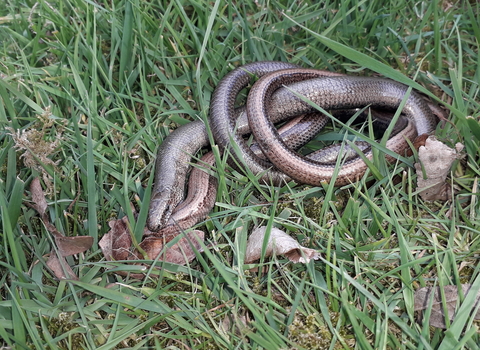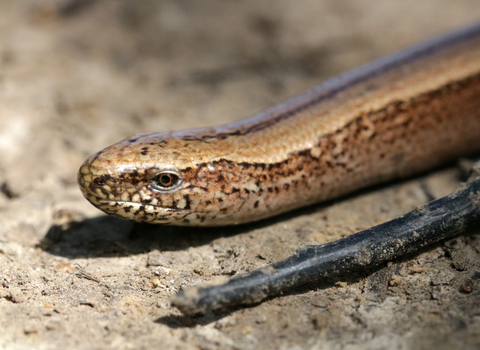©Bruce Shortland

©D.A. Trebilco

Jim Higham
Slow worm
Despite appearances, the slow worm is actually a legless lizard, not a worm or a snake! Look out for it basking in the sun on heathlands and grasslands, or even in the garden, where it favours compost heaps.
Scientific name
Anguis fragilisWhen to see
March to OctoberSpecies information
Category
Statistics
Length: 40-50cmWeight: 20-100g
Average lifespan: up to 20 years
Protected in the UK under the Wildlife and Countryside Act, 1981. Priority Species under the UK Post-2010 Biodiversity Framework.
About
The slow worm is neither a worm nor a snake, but is, in fact, a legless lizard - its identity is given away by its abilities to shed its tail and blink with its eyelids.Slow worms can be found in heathland, tussocky grassland, woodland edges and rides where they can find invertebrates to eat and a sunny patch in which to sunbathe. They are often found in mature gardens and allotments, where they like hunting around the compost heap. However, if you have a cat, you are unlikely to find them in your garden as cats predate them. Like other reptiles, slow worms spend the winter in a dormant, hibernation-like state known as brumation, usually from October to March.
